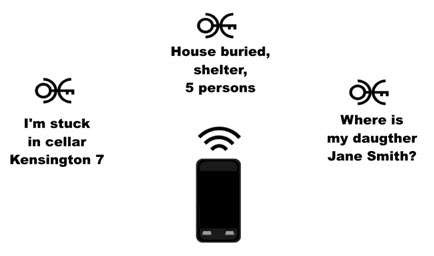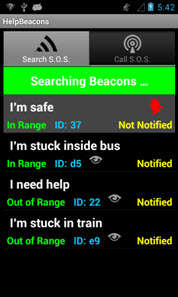HelpBeacons: Tweak the SSID – A lightweigth communication approach using surviving portions of ICT to foster network resilience
Motivation
Common consequences of emergencies are disruptions in the network infrastructure. In this cases, people improvise to overcome the situation. This improvisation motivates the BRIDGE Project to explore opportunistic appropriations of surviving ICT.
The HelpBeacons concept is inspired by people making use of the names broadcasted by wireless hotspot to send short, anonymous messages such as requests for turning the volume of the stereo down. These signals are the first thing people sees from a network and they are visible within a certain range. Using them opportunistically creates an interesting technological potential for emergency response.
Vision
The crux of the HelpBeacons concept is to use Access Point names as beacons to convey arbitrary messages (e.g. help requests, resources availability, or location) to support rescue missions.
The creation of a beacon which defines a sort of “I’m here” signal that can guide responders carrying devices that can capture the signals of created beacons to missing persons.
When beacons are discovered the seeking device associates to the beacon with the highest signal strength. After interchanging data, the seeking device disconnects and associates with the next unnotified beacon.
This concept aims at appropriating existing network protocols and standards in new, unanticipated ways to foster crisis resilience.
Based on tweaking existing infrastructures, the aim is to explore limits of current technologies and redefine boundaries for crisis scenarios.
Technology
The idea has been implemented by:
- Placing short messages inside the name of an open Wi-Fi hotspot
- Using Wi-Fi to seek for beacons and collect broadcasted information
- Piggybacking the handshaking process of Wi-Fi networks to confirm having read the broadcasted signal
- Establishing socket connections to exchange details when sufficient connection speed is given






